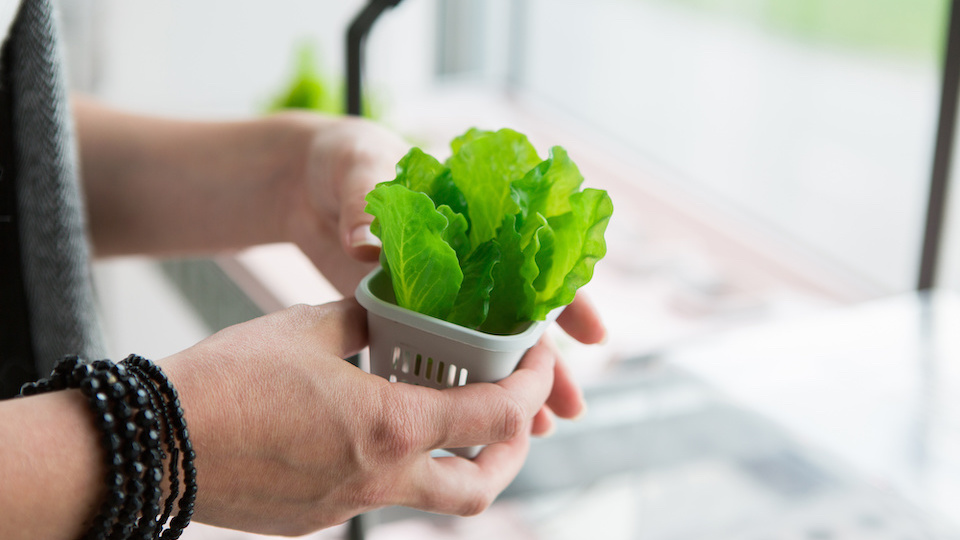Getting into the world of hydroponics can be more than a little intimidating. If you’re new to this type of gardening and just want to get your feet wet (no pun intended), you don’t have to have an extensive growing system with complicated pumps, electricity, or miles of land. All you need is a few basic supplies, and you can get started growing your own food right away…no work required.
What is the Kratky method?
If you want to provide fresh food for your family, but you don’t have the time to invest in a large garden, the passive-hydroponic Kratky method is perfect for you. Named after horticulturist B.A. Kratky from the University of Hawaii (the person who developed it), this method takes the principles of more extensive hydroponics systems such as Deep Water Culture and simplifies the entire process. While most hydroponic setups are fairly intuitive, efficient, and easy to assemble, it can get a little confusing when you start delving into things like wicks, airstones, pumps, and electricity.
The Kratky method eliminates the need for all of these. Plus, you don’t need to use soil, add nutrients to your water (after the initial setup), or even monitor your vegetables. All you have to do is set it up and forget about it until you are ready to harvest fresh food for your family.
How it works
In a Deep Water Culture system, (which is the closest active-hydroponic comparison to the simplified Kratky method), you have a reservoir with a nutrient solution at the bottom. On top of the reservoir is a lid or a raft with a hole through it that houses your net pot, growing medium, and plant. In this system, the nutrient solution doesn’t touch the bottom of the net pot, but an airstone is used to create surface bubbles that break and deliver nutrients to the roots. Over time, the roots will reach down and touch the water, forming an extensive root system in the solution. The airstone will also help ensure that your plant’s roots get the oxygen that they need to develop.
The Kratky method follows virtually the same setup, with the key difference being that it doesn’t require an airstone. Instead of using bubbles to deliver nutrients to the young plant, the roots are partially submerged in the solution from the start. This means that the roots will always stay wet. As the plant grows and the roots reach down into the water, the liquid will begin to dissipate. Since you don’t refill the liquid, this will give the roots oxygen to thrive, creating an “air zone” that is essential for healthy growth.
Notes regarding the Kratky method
Use for leafy greens only
Keep in mind; the Kratky method is only effective for growing leafy greens such as spinach, kale, and lettuce, not other vegetables such as tomatoes or cucumbers. Because you are unable to control the nutrients the plant takes up, you cannot account for the heavier feeding required by these other plants to produce fruit. However, leafy greens are stable growers, meaning they require the same amount of nutrients from seedling to mature plant, making them the perfect choice for this hydroponic system.
Pay attention to pest control
Unlike active hydroponic systems, the water isn’t moving at all during the growing process, and if you’ve ever experienced stagnant water, you know that it is prime territory for mosquitos. While you technically can use a Kratky system outdoors, you may want to reserve it for indoor use to prevent pests and heavy rainfall that can dilute the nutrient solution. You will also want to check in on it every once in a while to ensure that it hasn’t attracted anyway wayward bugs that managed to get into your home.
Watch the water level
Most leafy greens that you grow in a Kratky system will be ready to harvest in just a few weeks if you want tender, baby greens. However, you can also wait until the water has been depleted before harvesting for a more mature taste. If for some reason, you want to continue growing the plant once the nutrient solution is gone, you can always add more.
Use high-quality material
Not only should you ensure that your water, seeds, and hydroponics nutrients are good quality, but you will also want to start your system in a clean, sturdy container that you won’t mind having in your home for a while. The size of your container will depend on how many plants you want to grow, but it could be anything from a mason jar to a five-gallon bucket or a plastic tote.
-Susan Patterson




